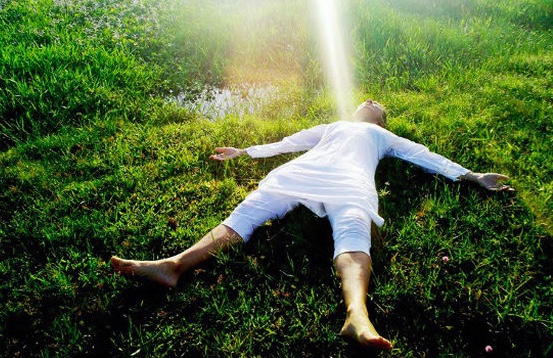“The bodily changes follow directly the PERCEPTION of the exciting fact, and that our feeling of the same changes as they occur IS the emotion.” William James
Part of being present is acknowledging where we are. We start with the body and perceive “what is there”, a skill called interception. These sensations, they are a recognition and culmination, result in feeling and emotion. Anodea Judith calls this charge or life force. As I continue with her course on Charge Activation Training, I continue to uncover the “healing and awakening” she speaks of and teaches us to “be-friend” sensation.
Even in numbness there is a sensation or a lack of sensation, which can be met. My repressed, suppressed, distracted, and exhausted self, yearns to be me in collapse and in expressions of “tiredness”. The response can be as simple as a validation and recognizing of what each part of the body is saying.
What is the benefit of acknowledging what is in the body? It is the first step in developing a sense of self, being fully alive. Vitality is steeped and anchored in sensuality. If we can’t sense the body, then we are losing touch with the range of emotion connect to life itself.
In trauma patients this skill called interception is well known and it efficacy in developing agency in self is well documented. However, our everyday stress also numbs us, leaves us in reaction mode, and we lose our sense of self in the hustle and bustle of our daily grind. Bessel Van der Kolk in The Body Keeps Score says, “Simply noticing what you feel fosters emotional regulation, and helps you to stop trying to ignore what is going on inside of you.”
We come to the body first. We do so as often the mind is engaged in many attempts to distract and deny experience. Antonio Damasio notes in The Feeling of What Happens, “Sometimes we use our minds not to discover facts, but to hide them…”
So we begin by tracking the sensations in the body. In yoga we do it by following the breath and our poses are our surrogates for points of challenge, resistance, and stress. Yoga asana is a moving meditation practice and lab for cultivating the practice of expanding around our shifting sensations, internal charge, and to cultivate a noticing that there is room for expansion.
You don’t have to do yoga to build this skill. Just scan your body from bottom to top and breathe. Take your time. Notice your resistance. Notice how the mind leaves or disavows the activity. Then despite that give voice to one sensation in your body. What is your body touching? Let’s say I am lying on the bed. As you wiggle your toes, what do they feel like? Where is there tension, or cracking, what places have a feeling tone? As I move these toes the rest of my ankle and foot want to get involved, as warmth has started to spread, and there is an openness that the rest of the foot wants to share in. And we keep going...
What if you don’t feel anything? Are you defective? Can you do this wrong? No! You are just numbed out. We numb out so we can cope with overwhelming stress. The cost is that we numb out to all the goodness and joy as well. So you start more basic. Can you sense the weight on the floor? We identify what areas we do feel touching the floor. What do you sense? Temperature, are you hot? Are you cold? Where do you sense that and go from there. Build the language slowly without judgment.
This is the beginning of cultivating a dialogue between flesh, feeling, and the mind. As we build this language, we naturally begin to respond to it. Or we can invite in response intentionally. So if I am uncomfortable or there is discomfort, how can I shift to create more ease? If I take time to practice here, in yoga, or in just a body scan, then I begin to re-wire my brain to use these same tools unconsciously during escalation like in traffic, waiting in line, or in crisis. It generalizes….and we are more integrated and whole.
As this dialouge becomes more understandable there is less to outwardly react to and more to subtly internally shift. This enacted validation engages and cultivates self-awareness, self-trust, and inspires embodied action for self-regulation and freedom from old patterns which do not serve us.
- euseppimindbody's blog
- Log in or register to post comments


